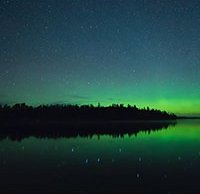| Back To News |
How to reduce noise in a single night sky exposure without losing star detail
posted Friday, March 24, 2017 at 12:59 PM EST

As we have seen before, stacking night sky images is the best method for reducing noise. However, this assumes that you are shooting stars or the Milky Way rather than something like aurorae, where stacking multiple exposures would wash out certain definition or colors. So what if you have a single exposure but still want to reduce noise, what is the best method? Greg Benz has just published an excellent tutorial where he relies on the plug-in Nik Dfine (which is available for free here) and luminosity masks.
But before we get into Photoshop, Benz does RAW processing in Lightroom. He notes that it’s important that you don’t oversharpen your RAW file because then you will be mostly sharpening the noise rather than any critical details. When working on sharpening and noise reduction, be sure to view your files at 100% or greater. While your mileage may vary, Benz uses the following guidelines for sharpening night sky images in Lightroom or Camera RAW: 0-25 sharpening, 5-25 masking, 5-10 luminance and 25-50 color. A particular note about color noise reduction, you don’t want to remove the natural color from the stars, so reduce color noise as much as possible without taking the color from the stars (which is much easier to see when viewing the image at 100% or higher).
To learn how Benz uses Nik Dfine, watch the video below. He also shows how he restores star detail – which is lost somewhat during the noise reduction process – using luminosity masks, which is very useful. Dimmer stars can be treated as noise by noise reduction software, so we want to make sure that we can save these stars in the final image.
If you want to learn more about Greg Benz’s “Lumenzia” luminosity masking panel, click here.
(Via Fstoppers)